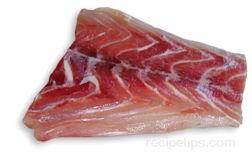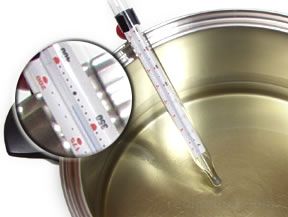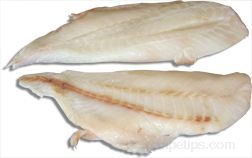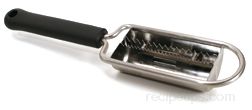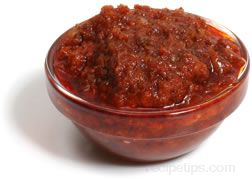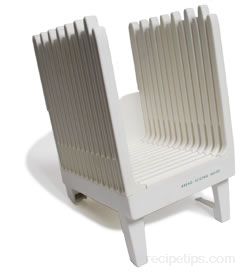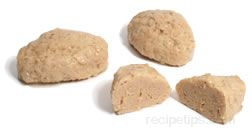|
Fish Cuts
When shopping for fish, it is beneficial to know what the different types of cuts of fish are so that you know exactly what you are purchasing. The basic cuts are described below.
| Type of Cut |
Description |
| Gutted |
A fish that has been gutted and scaled but still has its head, gills and fins. |
| Dressed |
A fish that has had the gills removed in addition to being gutted and scaled. Its head, fins and tail are still attached. Sometimes you will find that the fins have been cut off and the tail trimmed. |
| Pan-Dressed |
A dressed fish that has also had its head, fins and tail removed. |
| Butterflied |
A fish that has been sliced lengthwise thru the middle, splitting it into two halves but the fish is not sliced all the way through. It is left uncut either along the back or the belly. The two halves are opened up and flattened out to produce one piece. The cut may or may not be boned. |
|
Fillets |
Boneless cut of fish taken from the sides of the fish. Each side is slice away from the backbone and rib cage, producing a boneless cut. Each side can be left whole or cut into smaller pieces. |
| Steaks |
Pieces cross-cut from the body of a dressed fish. The flesh is cut across the grain, through the backbone. This leaves only the small section of backbone and one or two rib bones in the steak. Steaks are generally found 1/2 to 1 1/2 inches thick. |
| Chunks |
Pieces of fish weighing 1 1/2 to 4 pounds that are cut from thickest part of a large fish. The piece is cut from the same pieces that a fishmonger cuts steaks and is generally not a precut piece. The fishmonger will cut it to order and can bone it if requested. This cut is also referred to as a roast. |
Purchasing Fish
When purchasing fresh fish there are several things to look for to be sure you are selecting as fresh a fish as possible. Some of these points are shown below.
Fresh Fish
- Purchase the fish from a supplier that has enough business to have a consistent turnover. The place should be clean and have a fresh smell.
- Make sure the fish has been displayed or stored on ice prior to buying it.
- Fresh fish will not smell fishy and should look moist, shiny, well-rounded and not dry or dull looking. The transparent mucous covering on the fish should be clear. If it has turned opaque, it is a sign that the fish is old.
- When you press lightly on the skin it should bounce back and not leave and indent.
- If purchasing a whole fish, open the gills and check to see that they are a rosy color and have not begun to turn brown.
- The fish's scales should be intact. Shedding scales is a sign that it has been stored for too long.
- Fresh fish fillets or steaks should be neatly trimmed and not have any signs of bruising or blemishes.
Frozen Fish
- Look for many of the same qualities as you would in fresh fish. It should look fresh, not have a fishy smell, and be free of blemishes.
- It should be well packaged and the meat should not show signs of freezer burn.
- The fish should be frozen solid and not show signs of thawing on any parts of it.
- Fillets and steaks should have good coloring. If they have an opaque look to them, it is a sign of freezer burn.
After purchasing the fish, make sure fresh fish remains cold and that the frozen fish is place in a freezer unit as soon as possible. It would be best to bring a cooler to transport it home. Fresh fish should be returned to refrigerated conditions as soon as possible after purchasing. For the best flavor and for safe consumption, fish should be used within 1 or 2 days of purchase. When storing fresh fish, remove its wrapper and rinse with cold water. Pat dry with a paper towel, place on a plate, securely wrap with plastic or foil and place it in the rear of the refrigerator where it is the coldest. It can also be placed in an airtight container and stored in the refrigerator.
Quantity to Buy
When determining how much fish to buy, figure a 6 to 8 ounce of fillet or steak per serving. If purchasing whole fish, figure 12 to 16 ounces per serving because there is a lot of waste when they are cleaned. When determining the quantity to buy, you should also take into consideration the appetites you will be feeding.
When purchasing whole fresh fish, it may be a good idea to have the fishmonger clean the fish for you. This is a standard service that they provide and it may save some waste when the fish are cleaned by the fishmonger because of his experience in cleaning them. |





